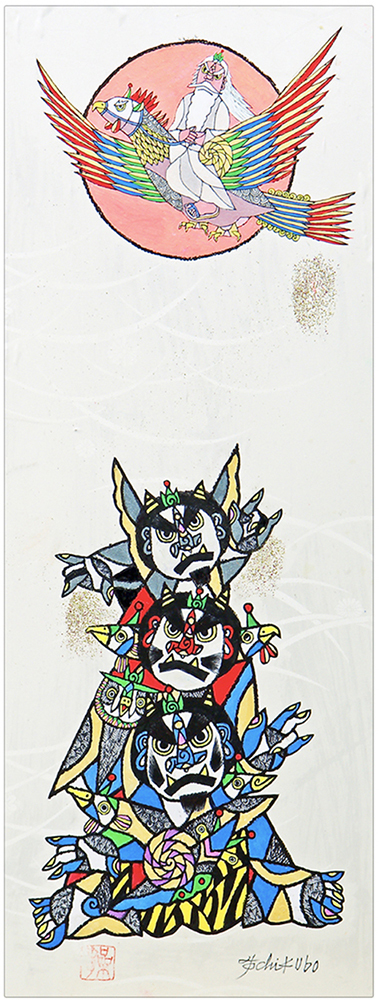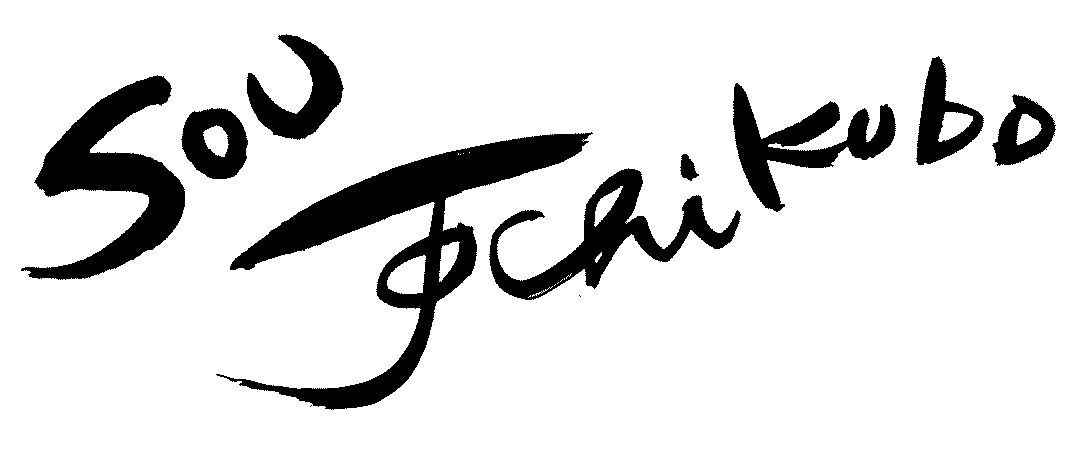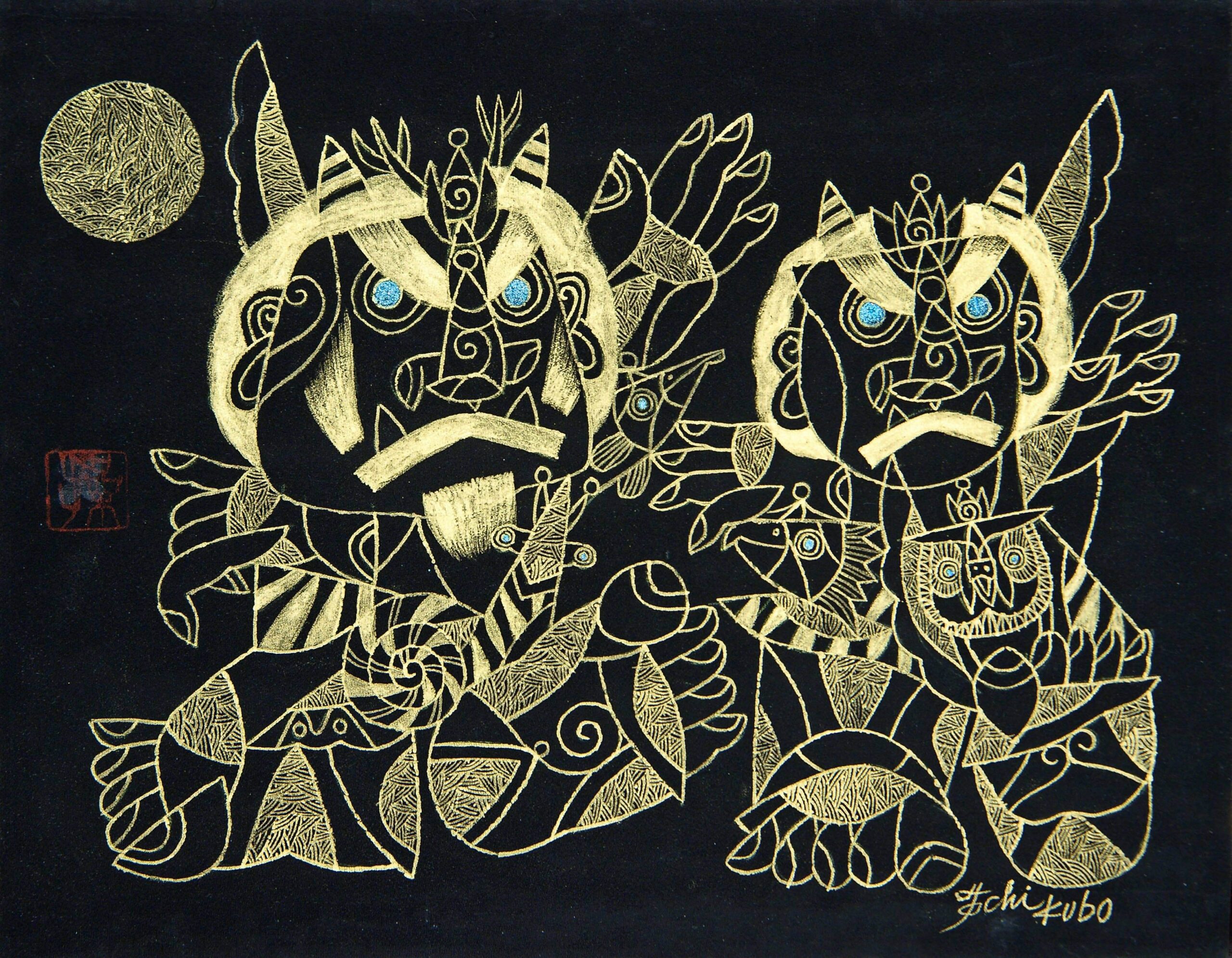Japanese “Oni” have been depicted with varying characteristics across different regions and time periods. In folklores (folk tales, legends, folk performing arts) Oni from all parts of the country exhibit diversity. They can be terrifying, resembling incarnations of hell or specters, villainous in nature, or even benevolent beings that drive away evil spirits, celebrate good harvests, safeguard against misfortune by engaging in virtuous acts that benefit humans. Even today, stories between humans and Oni continue to be created.
Sou Tochikubo’s Oni…
Sou Tochikubo’s portrayal of Oni (ogre) draws inspiration from the Hana Matsuri festival in Toei Town. “Oni” as a “symbol” of all living beings.
His concept of the “Oni” is not the traditional folklore Oni. Rather, they
are born in the modern age and possess unique powers. The Oni
are Flawless, gracefully soar through the sky, leisurely rest and radiate vitality for tomorrow.
Rishu Sennin and the Three ONI

“Rishu Sennin and the Three Oni” is based on the legend from my birthplace, Otori Town in Aichi prefecture. The legend follows Rishuu Sennin who lived on Mount Horaiji and rode a giant phoenix through the sky as he commanded three Oni.
Rishu Sennin
A Japanese Yamabushi born in 570 AD. Yamabushi are mountain worship ascetic practitioners who acquire special abilities through mountaineering asceticism (Shugendo) at sacred mountains in Japan. Rishu Sennin founded Horaiji Temple in 703 and is said to have lived 309 years.
Reference websites:
Shinshiro City Tourist Association (Mt. Horaiji and Rishu Sennin)
http://shinshirokankou.com/history.html
“Shugendo” is an ancient Japanese religion founded by Enno Ozuno (a.k.a. Enno Gyoja)
http://www.ubasoku.jp/presentation/shugendo.html
Founder of Shugendo (Enno Gyoja)
https://www.mlit.go.jp/tagengo-db/R1-00591.html

